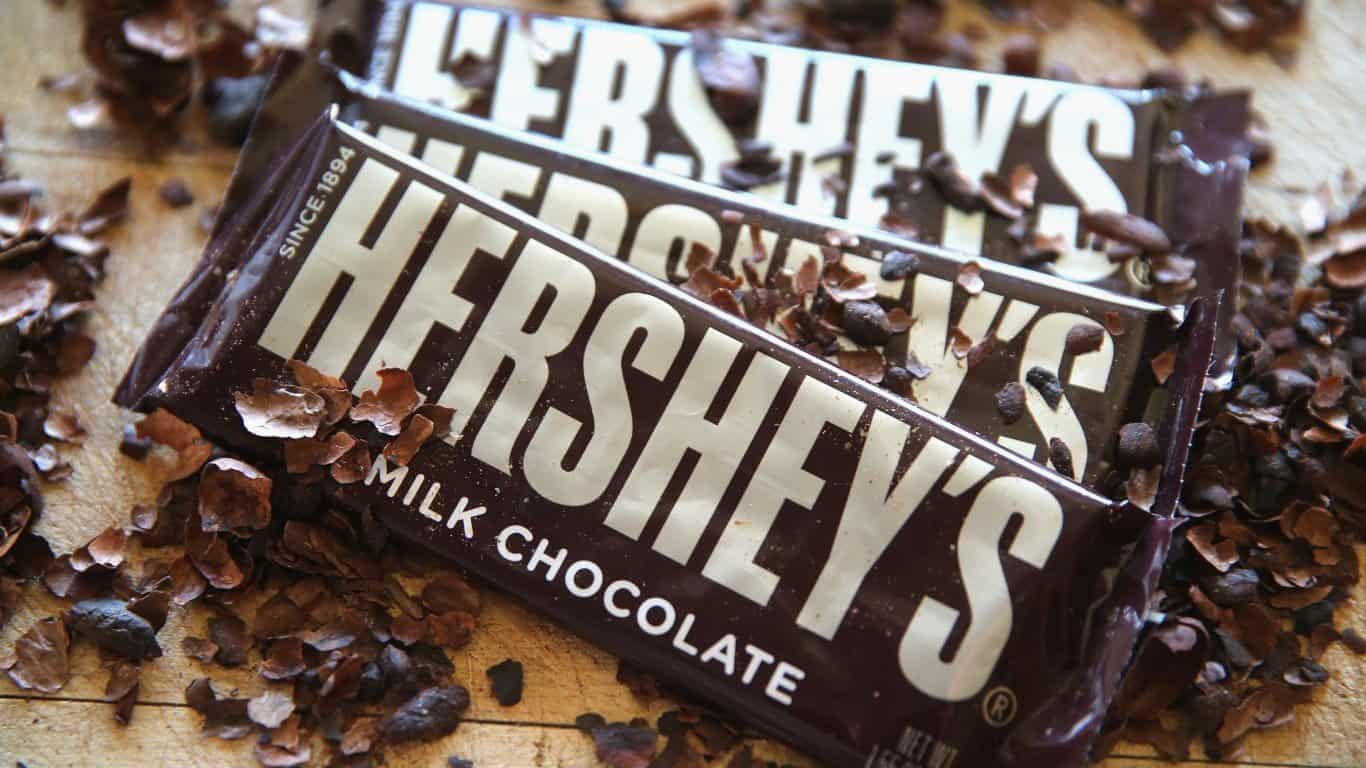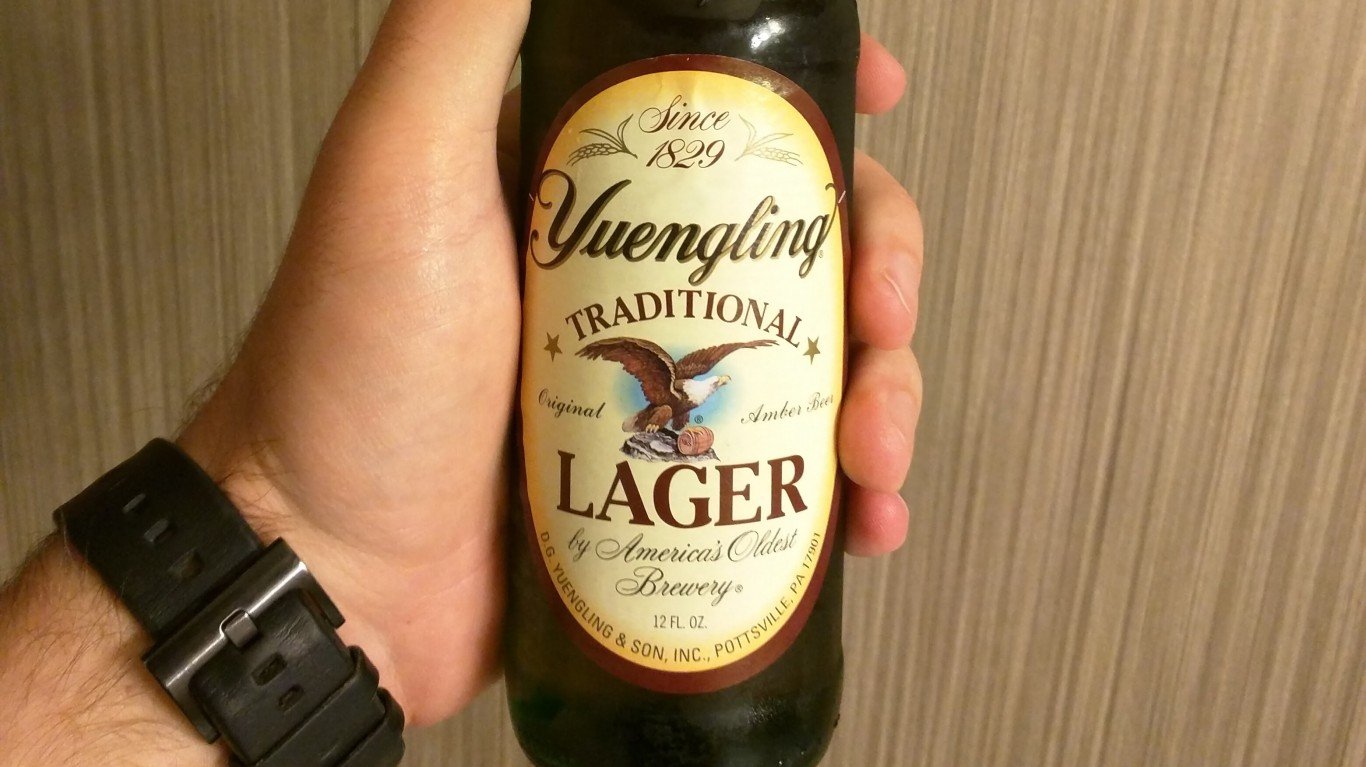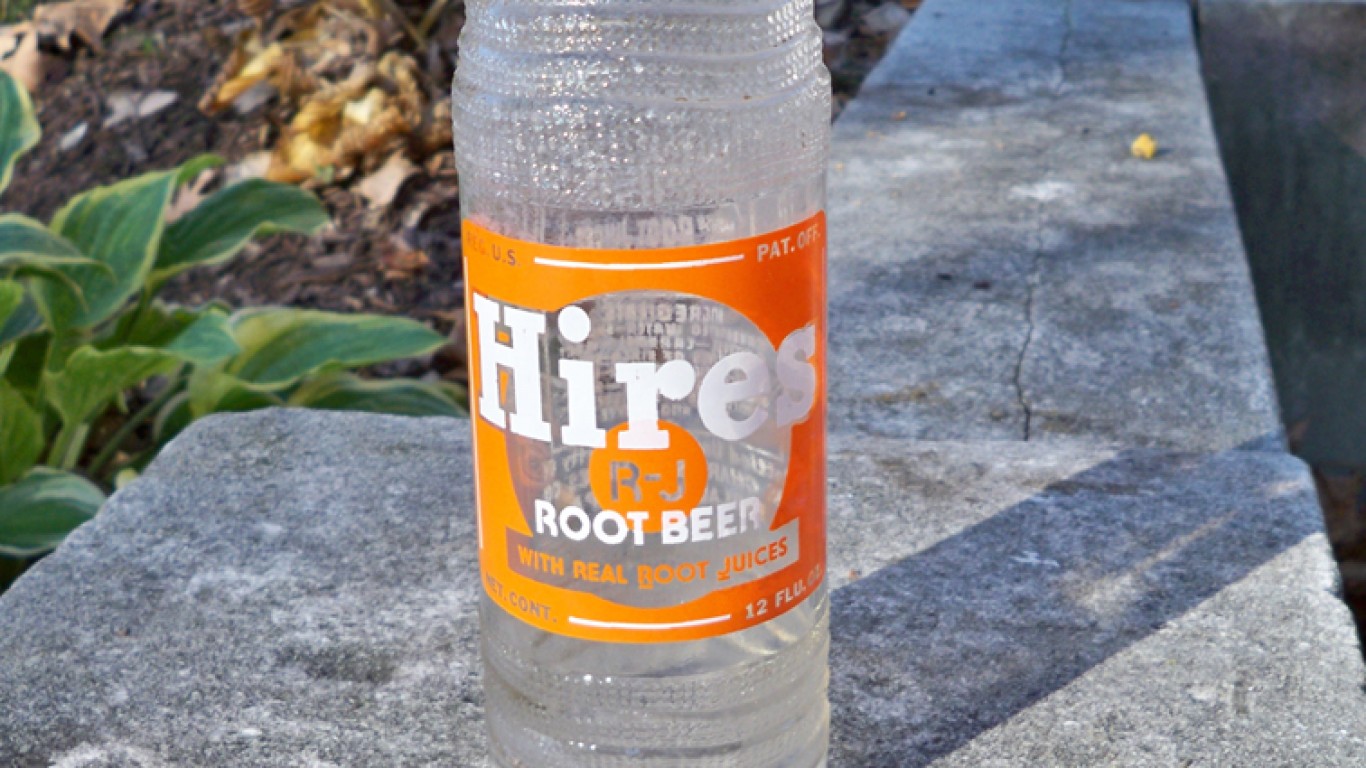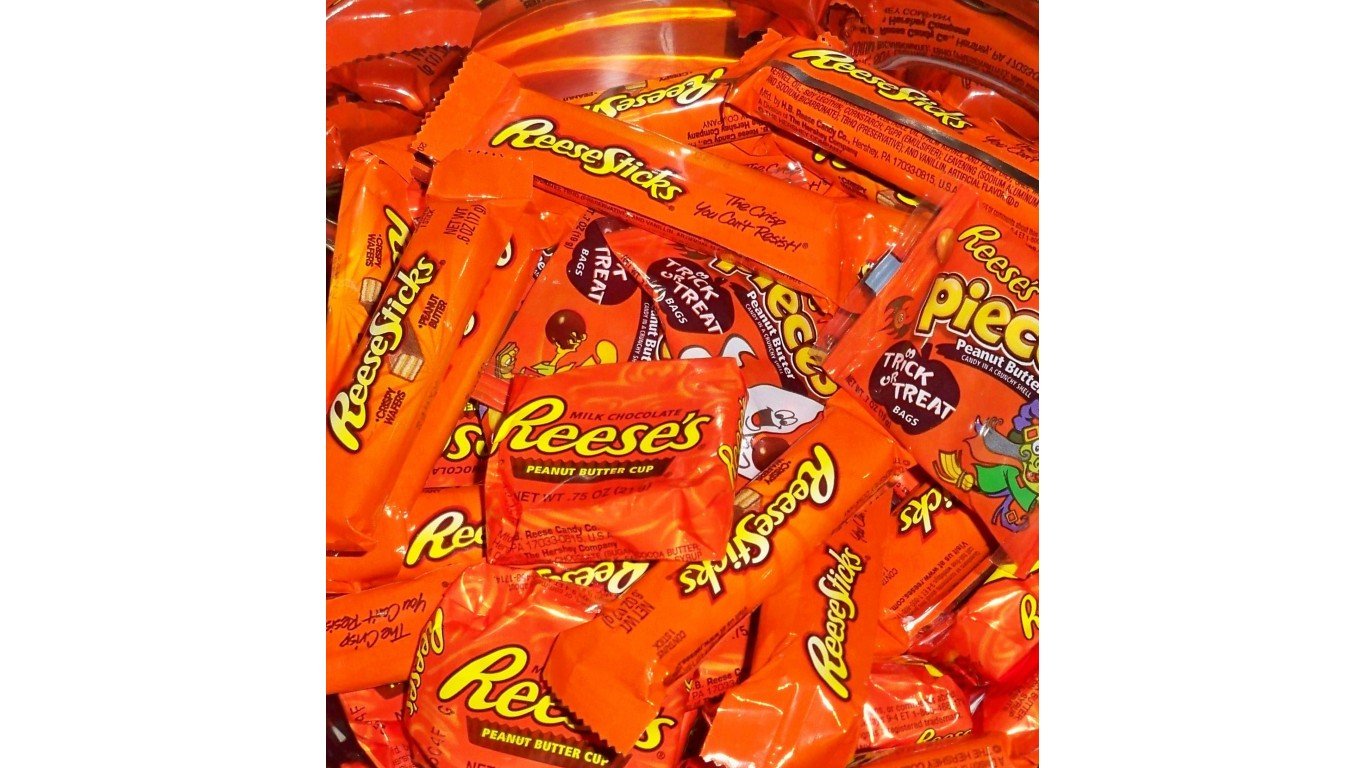Every state in the union has contributed to the American table, whether it’s through dishes invented or popularized there, food products invented and/or manufactured within its borders, or even restaurant chains that claim it as a birthplace.
Some states seem to have had more influence on what we eat and drink than others, however, and Pennsylvania is right up there with them. From its Native American and colonial roots through major influxes of Italian and German immigrants (the latter known, confusingly, as Pennsylvania Dutch) into the modern day, when it would be hard to find any major cuisine of the world that’s not represented, the Keystone State has given us some of our favorite foods and beverages.
Thanks to companies like Snyder’s of Hanover, Auntie Anne’s, Utz Brands, Wise Foods, and Herr’s Snacks, it is the country’s leading producer of pretzels and potato chips. It’s home to the nation’s most famous chocolate manufacturer, the Hershey Company, and the ultimate condiment producer, the H.J. Heinz Company, whose ketchup alone should qualify it for the American Food Hall of Fame. (These are 50 signature dishes that define American cuisine.)
Then there are funnel cakes, Philly cheesesteaks, Peeps, Martin’s potato rolls, and root beer, all of which were born there — not to mention America’s oldest continuously operated brewery, D.G. Yeungling & Son, founded in 1829 and today the sixth largest beer producer in the nation. (Here are some iconic drinks from every state everyone should try.)
To assemble a list of 15 iconic foods and drinks invented in Pennsylvania, 24/7 Tempo consulted sites including History, PennLive, and The Daily Meal, as well as the websites of numerous Pennsylvania-based food and drink producers.
These 15 represent only a sampling, as many other dishes and products can claim Pennsylvanian origins. One that can’t, surprisingly, is Philadelphia Cream Cheese, which was invented in New York State in 1872 and given its name because the Philadelphia region at the time was known for its high-quality dairy products.
Here are 15 iconic foods and drinks invented in Pennsylvania.
Scrapple
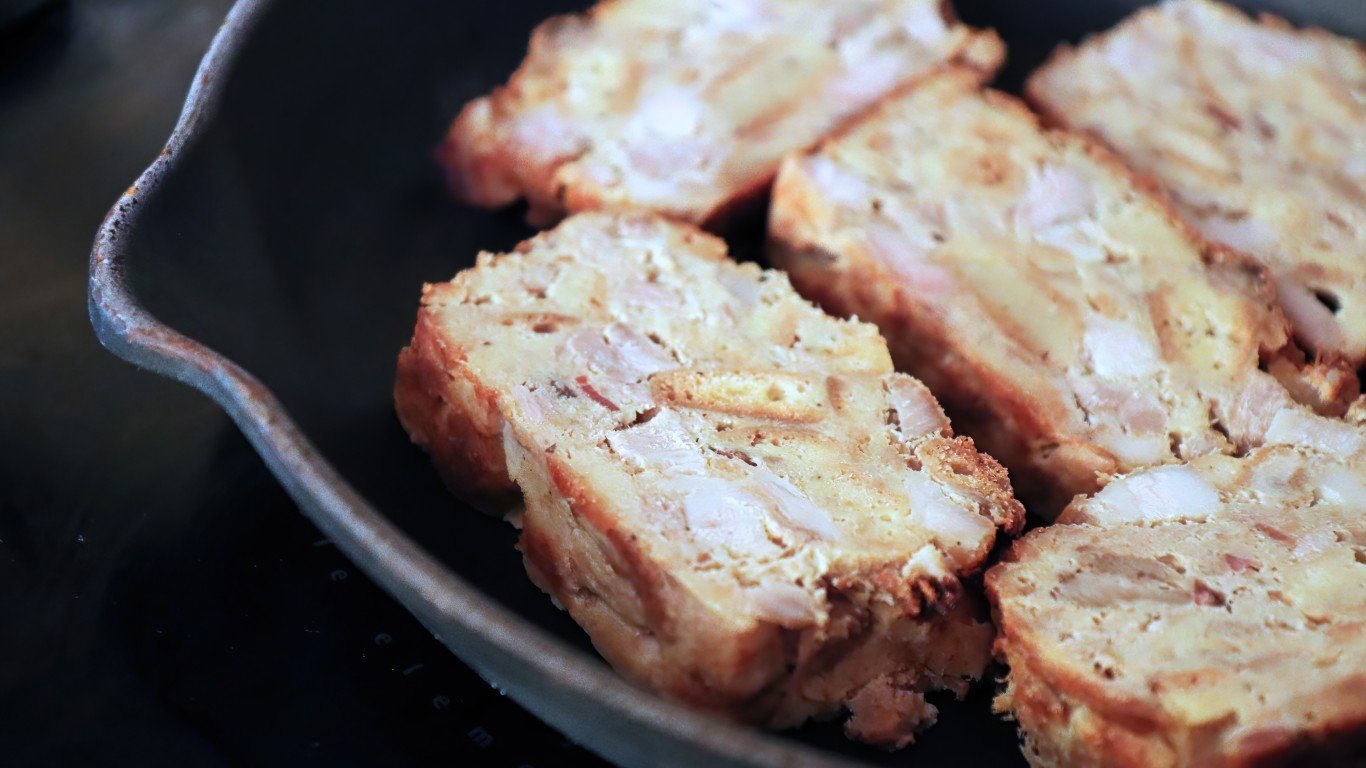
- Where invented: Philadelphia or Chester County
- When invented: 17th century
Definitely one of those love-it-or-hate-it regional specialties, scrapple is a kind of mush made with cornmeal or other grains mixed with pork offal (liver, heart, head meat, etc.) and herbs and poured into pans to solidify. It’s served sliced and fried and eaten (usually) as a breakfast meat. (Its name is a reference to the pork scraps it’s made with.) Also known as panhaas, scrapple is eaten around the mid-Atlantic region, but seems to have been introduced by way of the so-called Pennsylvania Dutch country (“Dutch” meaning “Deutsch” — as in German), as early as the 1600s.
Yuengling beer
- Where invented: Pottsville
- When invented: 1829
David Jüngling, a German immigrant brewer who changed his name to make it (slightly) more pronounceable in his new home country, opened the Eagle Brewery in Pottsville, a city in Schuylkill County, south of Wilkes-Barre, in 1829. It was destroyed by fire two years later, but he quickly relocated nearby. The brewery, which he rechristened D.G. Yuengling and Son after his son Frederick joined the operation, is still on that site. It’s America’s oldest beer producer in continuous operation, and is the largest craft brewery (and sixth-largest brewery of any kind) in the country.
Root beer
- Where invented: Philadelphia
- When invented: 1875
Root beer — a (usually) non-alcoholic beverage flavored with sassafras root and other herbs — has been around since 1700s, but was typically concocted at home or mixed up by pharmacists as a tonic. One of these pharmacists, Charles Elmer Hires, first made his version of what he called “root tea” in 1875, introducing it in the form of an extract that could be added to carbonated water at the Philadelphia Centennial Exposition a year later. In 1886, he began bottling it under the name “root beer,” perhaps assuming that more customers would be interested in beer than in tea.
Heinz Ketchup
- Where invented: Sharpsburg
- When invented: 1876
The original ketchup (sometimes spelled “catsup”) was not a tomato-based condiment, but rather a kind of fermented fish sauce originating in southern China. The British discovered it and developed their own versions, made with things like oysters, walnuts, and mushrooms. A Philadelphia scientist and doctor named James Mease is credited with creating the first tomato ketchup, back in 1812. The H.J. Heinz Company, founded by German immigrant Henry Heinz in 1869, refined the recipe and began selling it commercially in 1876. There are certainly other brands on the market, but Heinz basically rules the ketchup world, selling an estimated 650 million bottles a year.
Funnel cakes
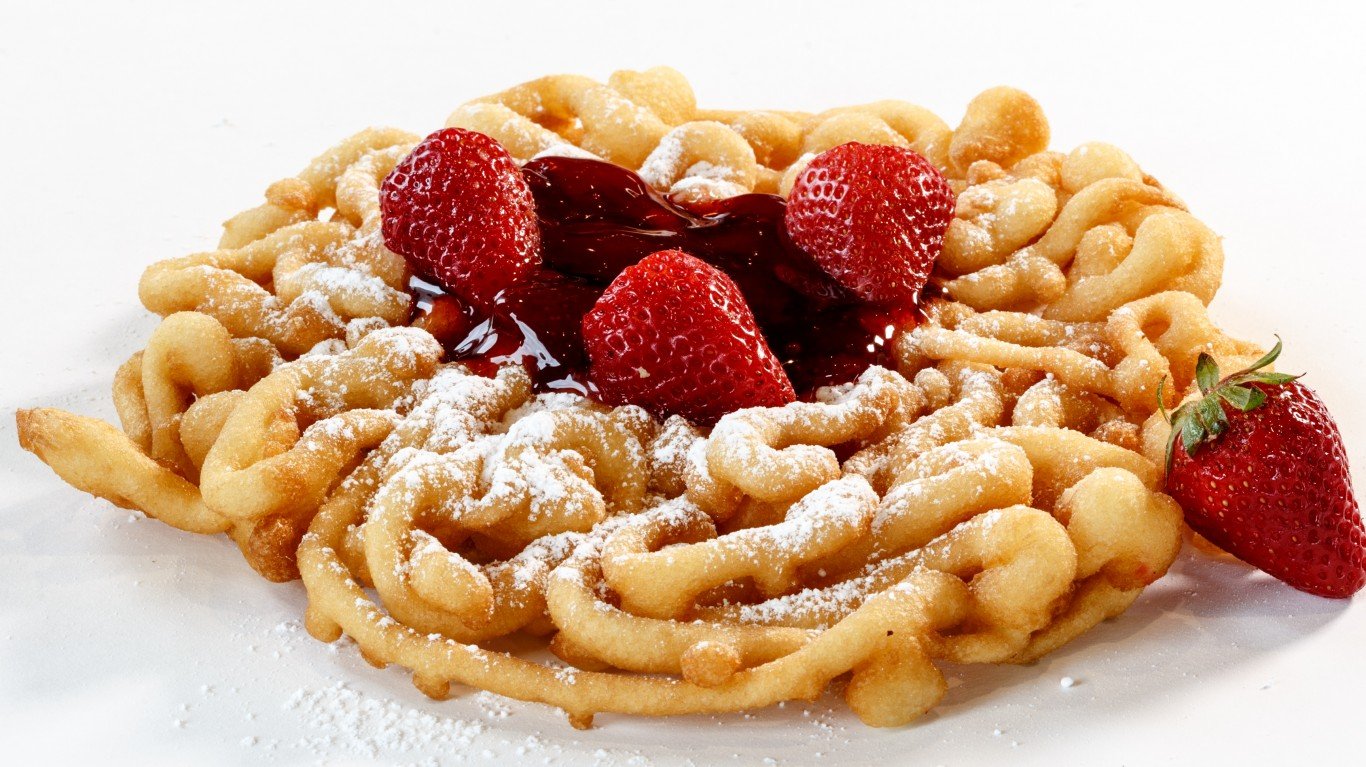
- Where invented: Pennsylvania Dutch country
- When invented: 1879
Another gift to food-lovers from the Pennsylvania Dutch community is this state fair and amusement park staple — basically batter poured through a funnel into sizzling oil and deep-fried, then dusted with powdered sugar. Introduced to America in the latter 1870s, funnel cakes are a variation on a German confection, called Drechderkuche in Pennsylvania German.
Hershey Bar

- Where invented: Lancaster
- When invented: 1900
Known by its manufacturers as “the great American chocolate bar,” this candy classic came out of Milton Hershey’s Hershey Chocolate Company, founded in 1894. Milk chocolate — made by adding milk and sugar to cocoa — was invented by a Swiss chocolatier named Daniel Peter in 1875. Hershey adapted the idea, originally selling the bars only in Pennsylvania, though they’d become available nationwide by 1906.
Banana split

- Where invented: Latrobe
- When invented: 1904
As with many foods, there are competing claims as to the origins of this extravagant dessert, but it is generally accepted that it was first made by an optometrist named David Strickler, who’d seen ice cream served with fresh fruit on a trip to Atlantic City. He thought he’d try it with a banana, and hit upon the idea of splitting the peeled fruit lengthwise, then filling the space between the halves with ice creams of various flavors, topped with assorted syrups and chopped nuts and crowned with whipped cream inset with maraschino cherries. He served his creation at the soda fountain in a pharmacy he bought, and its fame soon spread nationwide.
Bubble gum

- Where invented: Philadelphia
- When invented: 1928
This iconic, elastic childhood treat was invented by Walter Diemer, an employee of Philadelphia’s Fleer Chewing Gum Company. Trying to develop a chewing gun that would be less sticky than usual, he came up with something that could be blown up, balloon-like. His original formula turned out to be a dingy gray in color, so he added diluted red dye to the material, lending it its familiar pink color. He originally called the new gum Blibber-Blubber, but the company president later renamed it Dubble Bubble.
Reese’s Peanut Butter Cups
- Where invented: Hershey
- When invented: 1928
H.B. Reese, who’d worked for the Hershey Company, left Hershey to start his own candy factory in 1923. His departure was apparently amicable, because he used Hershey chocolate for his wares — including his inspired combination of chocolate with peanut butter, in what were originally called “penny cups” (because they cost one cent each). The connection became even closer after Reese’s death in 1956, when his sons merged the company with, yes, Hershey’s. Today the peanut butter cups are both the star of the Hershey lineup and the top-selling candy brand in the world.
Twizzlers
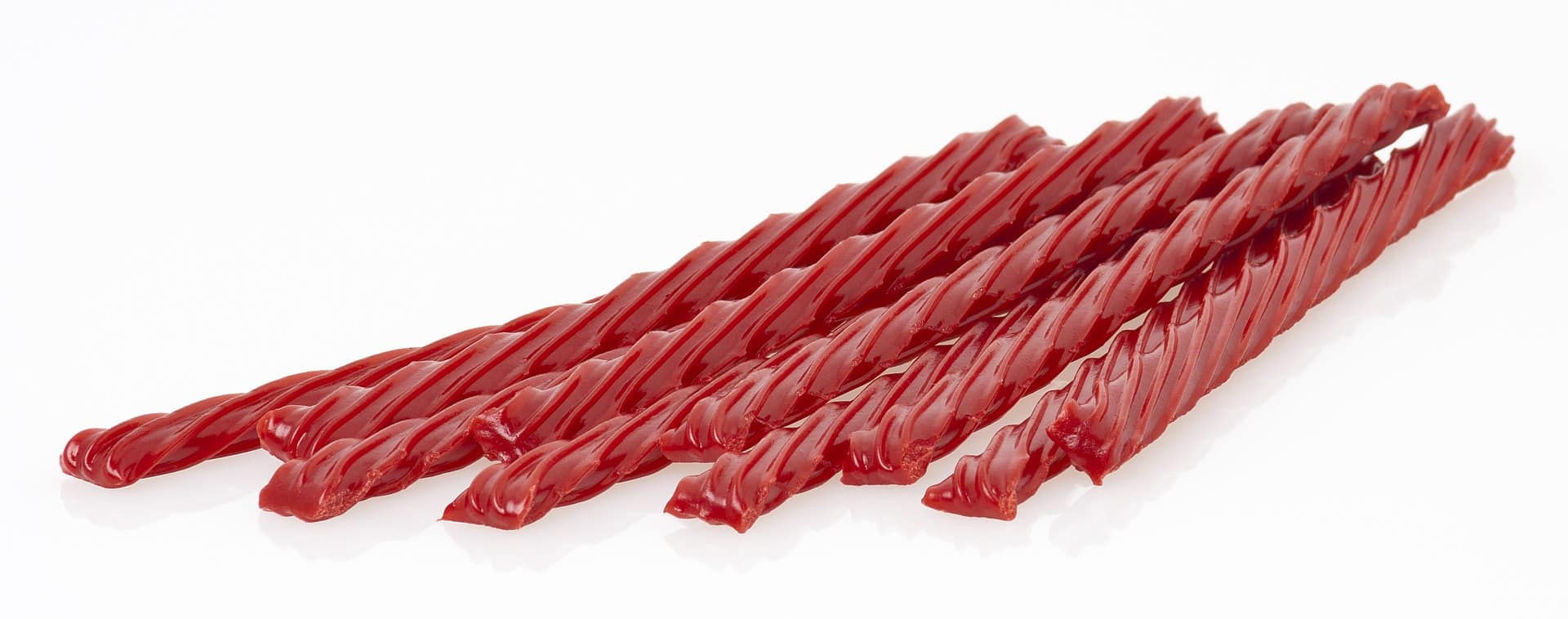
- Where invented: Lancaster
- When invented: 1929
Said to be the second-best-selling treat at movie theater refreshment stands (after popcorn, of course), Twizzlers — spiraled lengths of black licorice or variously colored similarly chewy candy (the strawberry-flavored red variety is the most common) — were invented by a company founded in 1845 as Young and Smylie. They were originally simply twisted licorice, and licorice was so much a part of the firm’s product line that in 1902, Young and Smylie merged their operation with two other small candy makers to form the National Licorice Company. In 1968, in a reference back to their past, the company become Y&S Candies. It was assimilated into the Hershey Company in 1982.
Cheesesteak
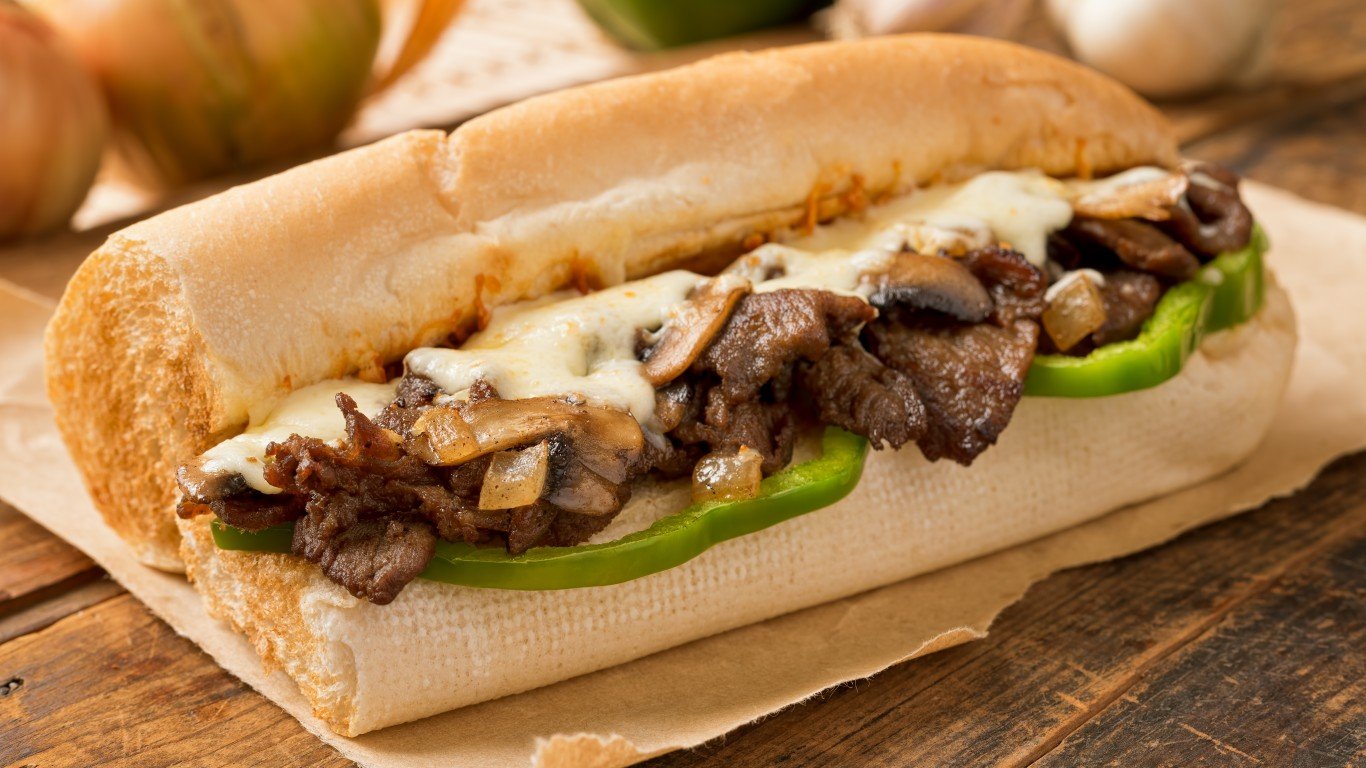
- Where invented: Philadelphia
- When invented: Early 1930s
This emblematic American sandwich, commonly called a Philly cheesesteak, is now found all over the country. A happy combination of thin-sliced steak, cheese (traditionally either provolone, American cheese, of Cheez Whiz), and often sautéed onions and green peppers on a long, soft Italian-style hoagie roll (preferably from Philadelphia’s Amoroso bakery), it was apparently created by brothers Pat and Harry Olivieri. The two owned a hot dog stand in South Philly, and one day, they thought they’d try doing something with steak instead of wieners. The original sandwich was just meat and onions, with the cheese added later. In 1940, they converted their stand into a restaurant called Pat’s King of Steaks, which is still going strong.
Stromboli
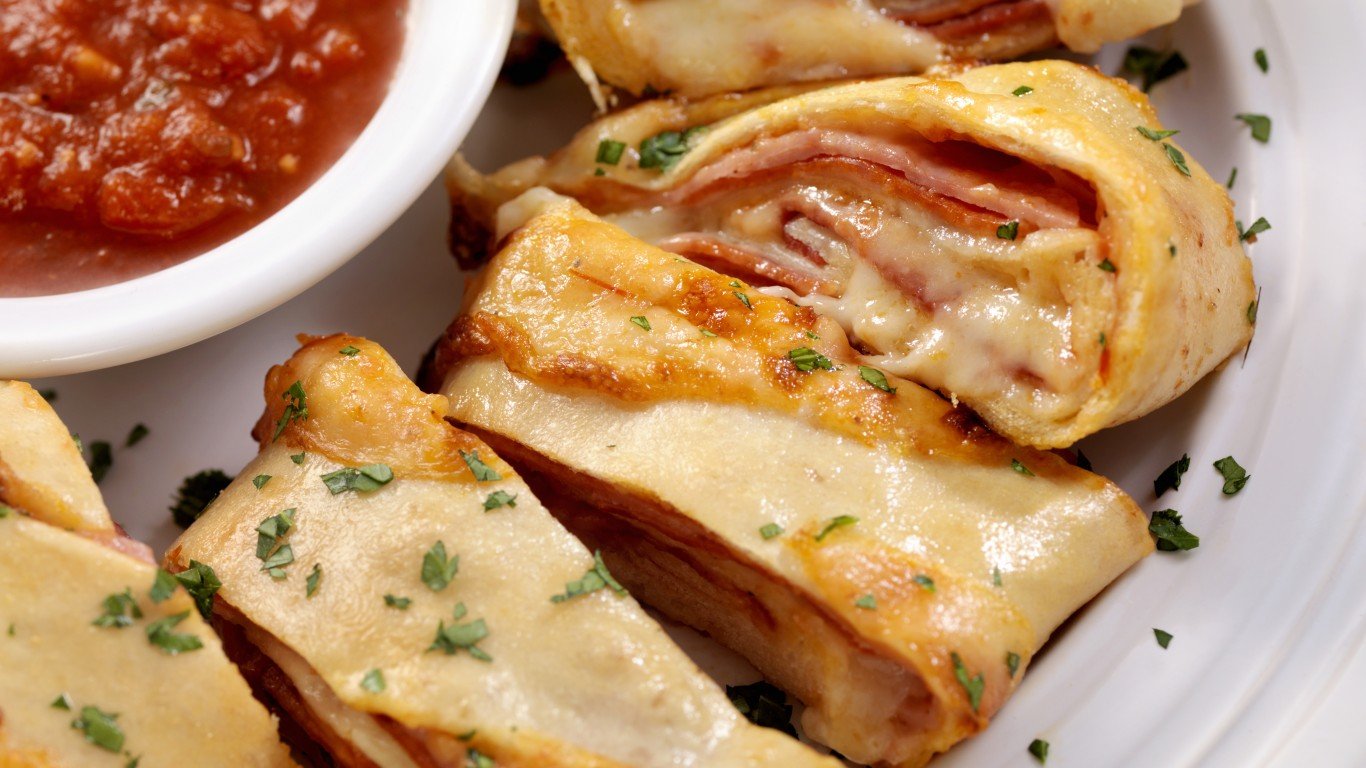
- Where invented: Essington
- When invented: 1950
Nazzareno Romano, proprietor of Romano’s Italian Restaurant & Pizzeria in this town outside Philadelphia, is credited with coming up with a savory cylinder of Italian meats and cheeses rolled up inside pizza dough. It was named for a Roberto Rossellini movie that had recently come out and was very much in the news because of the scandalous on-set relationship between the director and his star, Ingrid Bergman, both of whom were married to others. (The film, in turn, was named for a volcanic island off the coast of Sicily, where the film takes place.)
Peeps
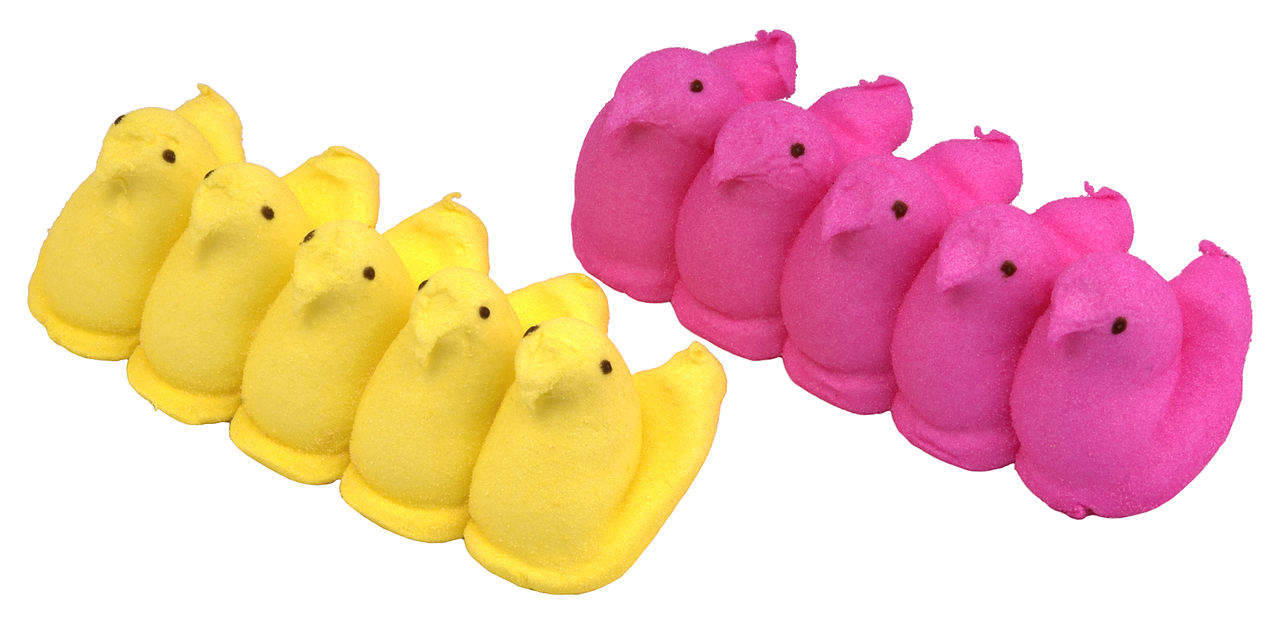
- Where invented: Bethlehem
- When invented: 1953
Russian immigrant Sam Born established his Just Born confectionery in 1910. It did well, but began doing even better after it bought another Pennsylvania concern, the Rodda Candy Company, whose product line included handmade marshmallow chicks. Born’s son Bob devised a way to mass-produce the little critters, and they soon became an Easter staple (WalletHub estimates that about 1.5 billion Peeps are sold around that time every year). Just Born went on to expand the product line, introducing myriad colors beyond the original yellow and creating other shapes for other holidays (like ghost Peeps for Halloween).
Martin’s potato rolls
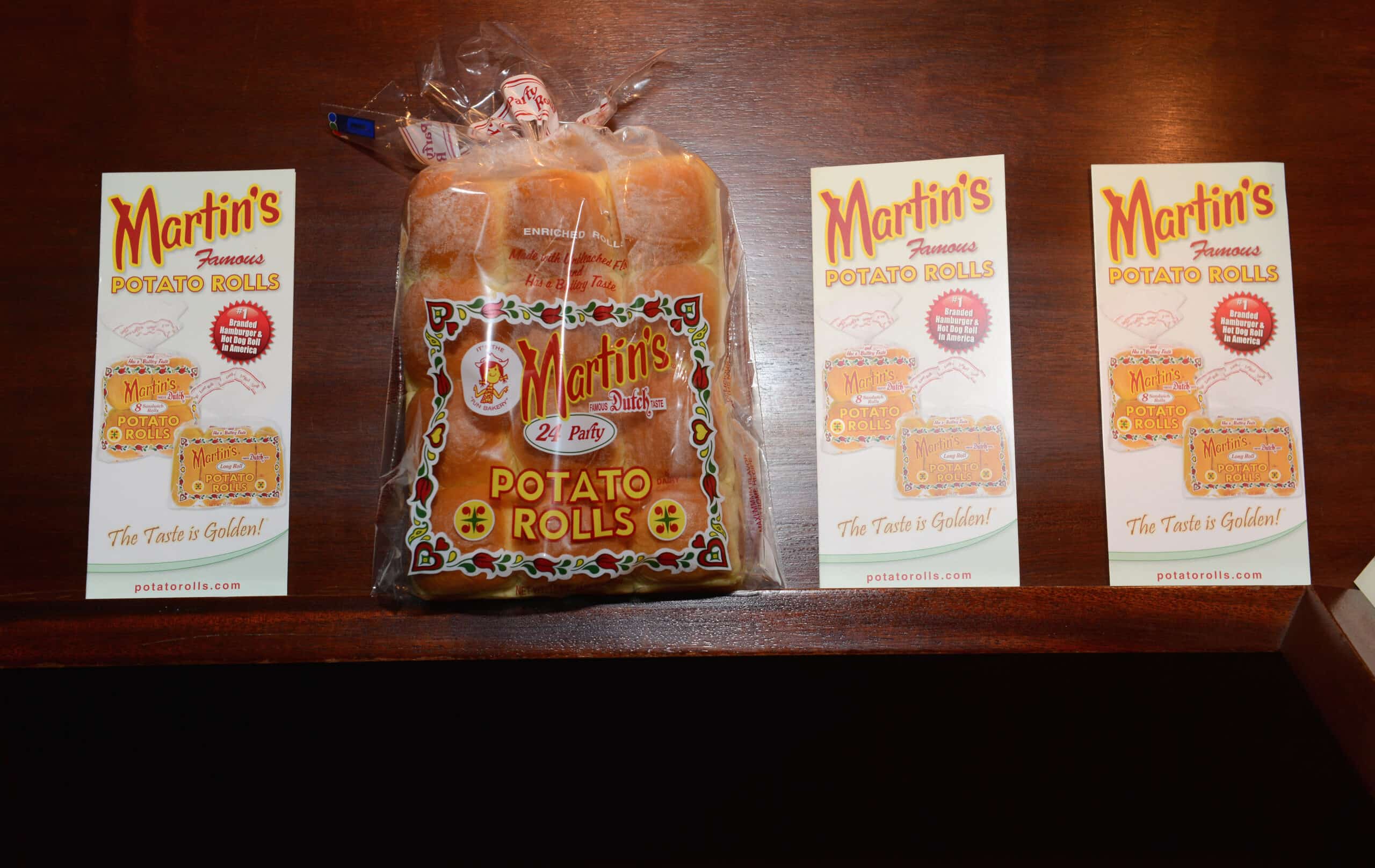
- Where invented: Chambersburg
- When invented: 1957
The family-owned Martin’s Famous Pastry Shoppe grew out of a home baking operation founded to make soft, faintly sweet rolls incorporating potato flour (a Pennsylvania Dutch tradition), as well as various pastries, cookies, etc. In 1967, the Martin family opened a restaurant, moving the bakery to the premises, and when demand for the rolls became too great, they established a stand-alone facility. When Danny Meyer selected Martin’s potato rolls for his ever-expanding Shake Shack chain, they entered the mainstream.
The Big Mac
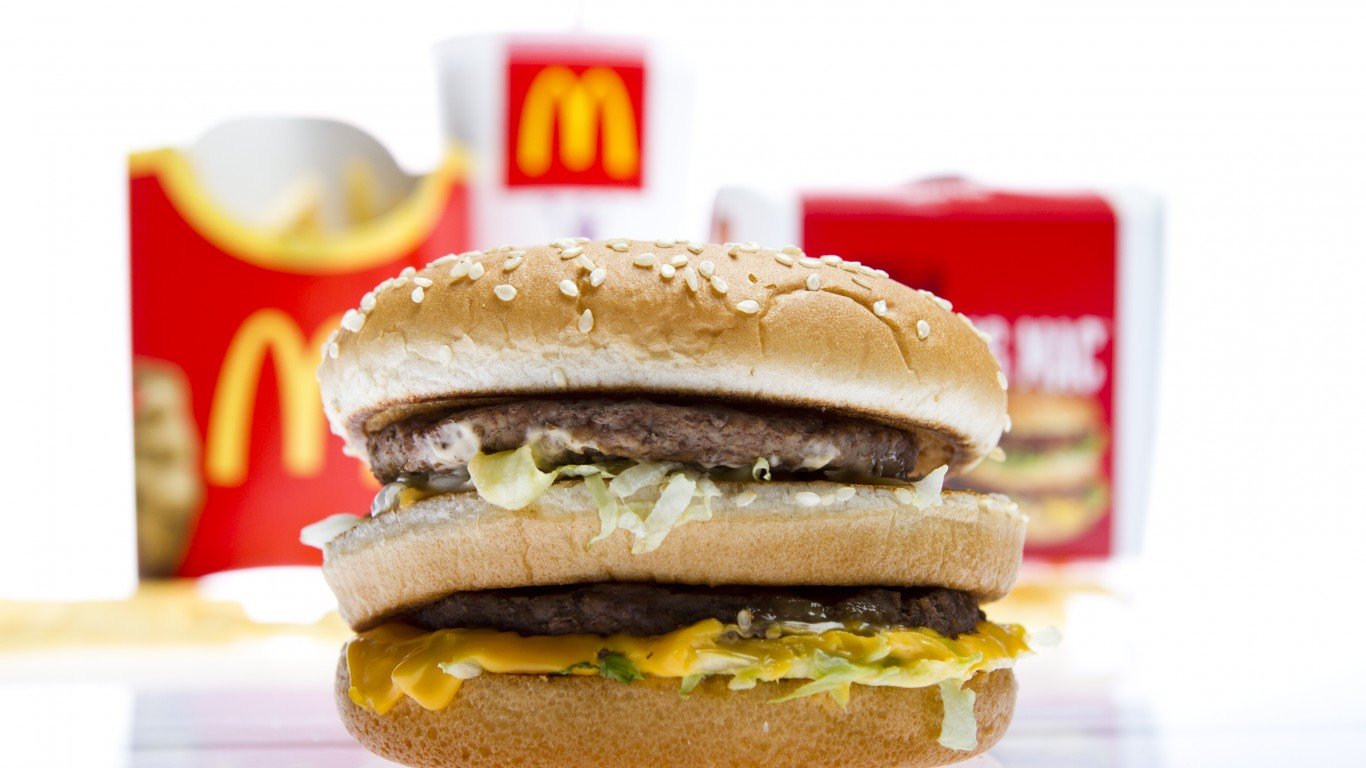
- Where invented: Ross Township
- When invented: 1967
The Big Mac — a double-decker burger with two patties, American cheese, lettuce, onions, pickles, and “special sauce” on a sesame bun — is probably the most famous of all the massive fast-food chain’s many signature creations. McDonald’s franchisees sometimes invent menu variations of their own, and this one was the work of Jim Delligatti, who had several McDonald’s units in the Pittsburgh area. He reportedly first made the burger at his restaurant in Ross Township, on the edge of Pittsburgh, and introduced it to the public at his outpost in Uniontown, southeast of the city.
